Related Research Articles

Sugar is the generic name for sweet-tasting, soluble carbohydrates, many of which are used in food. Table sugar, granulated sugar, or regular sugar, refers to sucrose, a disaccharide composed of glucose and fructose.

Fructose, or fruit sugar, is a simple ketonic monosaccharide found in many plants, where it is often bonded to glucose to form the disaccharide sucrose. It is one of the three dietary monosaccharides, along with glucose and galactose, that are absorbed directly into blood during digestion. Fructose was discovered by French chemist Augustin-Pierre Dubrunfaut in 1847. The name "fructose" was coined in 1857 by the English chemist William Allen Miller. Pure, dry fructose is a sweet, white, odorless, crystalline solid, and is the most water-soluble of all the sugars. Fructose is found in honey, tree and vine fruits, flowers, berries, and most root vegetables.
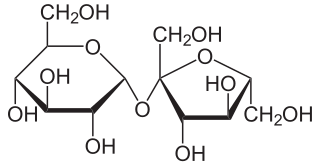
Sucrose is common sugar. It is a disaccharide, a molecule composed of two monosaccharides: glucose and fructose. Sucrose is produced naturally in plants, from which table sugar is refined. It has the molecular formula C12H22O11.
A hydrometer is an instrument used for measuring the relative density of liquids based on the concept of buoyancy. They are typically calibrated and graduated with one or more scales such as specific gravity.
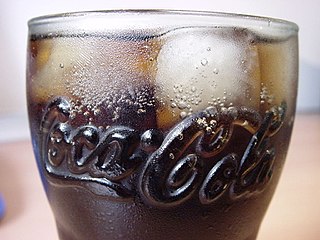
The Coca-Cola Company's formula for Coca-Cola syrup, which bottlers combine with carbonated water to create the company's flagship cola soft drink, is a closely guarded trade secret. Company founder Asa Candler initiated the veil of secrecy that surrounds the formula in 1891 as a publicity, marketing, and intellectual property protection strategy. While several recipes, each purporting to be the authentic formula, have been published, the company maintains that the actual formula remains a secret, known only to a very few select employees.
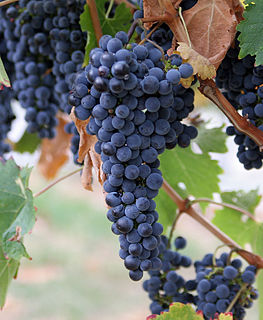
Winemaking or vinification is the production of wine, starting with the selection of the fruit, its fermentation into alcohol, and the bottling of the finished liquid. The history of wine-making stretches over millennia. The science of wine and winemaking is known as oenology. A winemaker may also be called a vintner. The growing of grapes is viticulture and there are many varieties of grapes.

The subjective sweetness of a wine is determined by the interaction of several factors, including the amount of sugar in the wine, but also the relative levels of alcohol, acids, and tannins. Sugars and alcohol enhance a wine's sweetness; acids (sourness) and bitter tannins counteract it. These principles are outlined in the 1987 work by Émile Peynaud, The Taste of Wine.
Refractometry is the analytical method of measuring substances' refractive index in order to, for example, assess their composition or purity. A refractometer is the instrument used to measure refractive index ("RI"). Although refractometers are best known for measuring liquids, they are also used to measure gases and solids; such as glass and gemstones.
Degrees Brix is the sugar content of an aqueous solution. One degree Brix is 1 gram of sucrose in 100 grams of solution and represents the strength of the solution as percentage by mass. If the solution contains dissolved solids other than pure sucrose, then the °Bx only approximates the dissolved solid content. The °Bx is traditionally used in the wine, sugar, carbonated beverage, fruit juice, maple syrup and honey industries.

Golden syrup or light treacle is a thick amber-coloured form of inverted sugar syrup made in the process of refining sugar cane or sugar beet juice into sugar, or by treatment of a sugar solution with acid. It is used in a variety of baking recipes and desserts. It has an appearance similar to honey and is often used as a substitute where honey is unavailable or prohibitively expensive.

Cranberry juice is the liquid juice of the cranberry, typically manufactured to contain sugar, water, and other fruit juices. Cranberry – a fruit native to North America – is recognized for its bright red color, unique, tart taste, and versatility for product manufacturing. Major cranberry products include dried cranberry, cranberry sauce, frozen cranberry, cranberry powder, and cranberry juice.
The Oechsle scale is a hydrometer scale measuring the density of grape must, which is an indication of grape ripeness and sugar content used in wine-making. It is named for Ferdinand Oechsle (1774–1852) and it is widely used in the German, Swiss and Luxembourgish wine-making industries. On the Oechsle scale, one degree Oechsle corresponds to one gram of the difference between the mass of one litre of must at 20 °C and 1 kg. For example, must with a specific mass of 1084 grams per litre has 84° Oe.

High-fructose corn syrup (HFCS), also known as glucose-fructose, isoglucose and glucose-fructose syrup, is a sweetener made from corn starch. As in the production of conventional corn syrup, the starch is broken down into glucose by enzymes. To make HFCS, the corn syrup is further processed by glucose isomerase to convert some of its glucose into fructose. HFCS was first marketed in the early 1970s by the Clinton Corn Processing Company, together with the Japanese Agency of Industrial Science and Technology, where the enzyme was discovered in 1965.
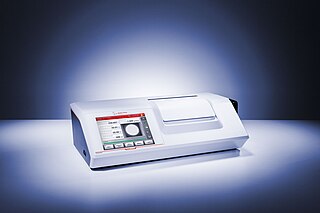
A polarimeter is a scientific instrument used to measure the angle of rotation caused by passing polarized light through an optically active substance.
A refractometer is a laboratory or field device for the measurement of an index of refraction (refractometry). The index of refraction is calculated from Snell's law while for mixtures, the index of refraction can be calculated from the composition of the material using several mixing rules such as the Gladstone–Dale relation and Lorentz–Lorenz equation.

Inline process refractometers are a type of refractometer designed for the continuous measurement of a fluid flowing through a pipe or inside a tank. First patented by Carl A. Vossberg Jr. US2807976A - Refractometer US2549402A, these refractometers typically consist of a sensor, placed inline with the fluid flow, coupled to a control box. The control box usually provides a digital readout as well as 4-20 mA analog outputs and relay outputs for controlling pumps and valves. Instead of placing the sensor inline of the process, it can be placed in a bypass, attached by a thin tube.
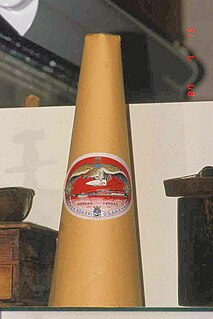
Sugar was first produced from sugarcane plants in northern India sometime after the first century CE. The derivation of the word “sugar” is thought to be from Sanskrit शर्करा (śarkarā), meaning "ground or candied sugar," originally "grit, gravel". Sanskrit literature from ancient India, written between 1500 - 500 BC provides the first documentation of the cultivation of sugar cane and of the manufacture of sugar in the Bengal region of the Indian subcontinent. The Sanskrit name for a crudely made sugar substance was guda, meaning “to make into a ball or to conglomerate."

In viticulture, ripeness is the completion of the ripening process of wine grapes on the vine which signals the beginning of harvest. What exactly constitutes ripeness will vary depending on what style of wine is being produced and what the winemaker and viticulturist personally believe constitutes ripeness. Once the grapes are harvested, the physical and chemical components of the grape which will influence a wine's quality are essentially set so determining the optimal moment of ripeness for harvest may be considered the most crucial decision in winemaking.

Traditional Balsamic Vinegar is a type of balsamic vinegar produced in Modena and the wider Emilia Romagna region of Italy. Unlike inexpensive "Balsamic Vinegar of Modena" (BVM), Traditional Balsamic Vinegar (TBV) is produced from cooked grape must, aged at least 12 years, and protected under the European Protected Designation of Origin (PDO) system, fetching higher prices. Although the names are similar, TBV and the inexpensive imitation BVM are very different.
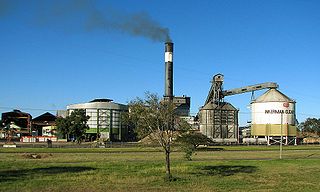
A sugar cane mill is a factory that processes sugar cane to produce raw or white sugar.
References
- ↑ ICUMSA: History, retrieved 2010-02-07.
- ↑ Plews, R. W. (1997), The History of ICUMSA. The First 100 Years, 1897–1997, Berlin: Verlag Albert Bartens KG, ISBN 0-905003-15-2 .
- ↑ ICUMSA Methods Book (2009), Verlag Dr. Albert Bartens KG, Berlin, 2010, ISBN 978-3-87040-553-3 and Supplement ISBN 978-3-87040-563-2)
- ↑ Methods Book, op. cit. Specification and Standard SPS-3 (2000) Refractometry and Tables
- ↑ Reichert Analytical Instruments, AR200 Refractometer User's Guide
- ↑ ICUMSA Constitution, retrieved 2010-02-07.